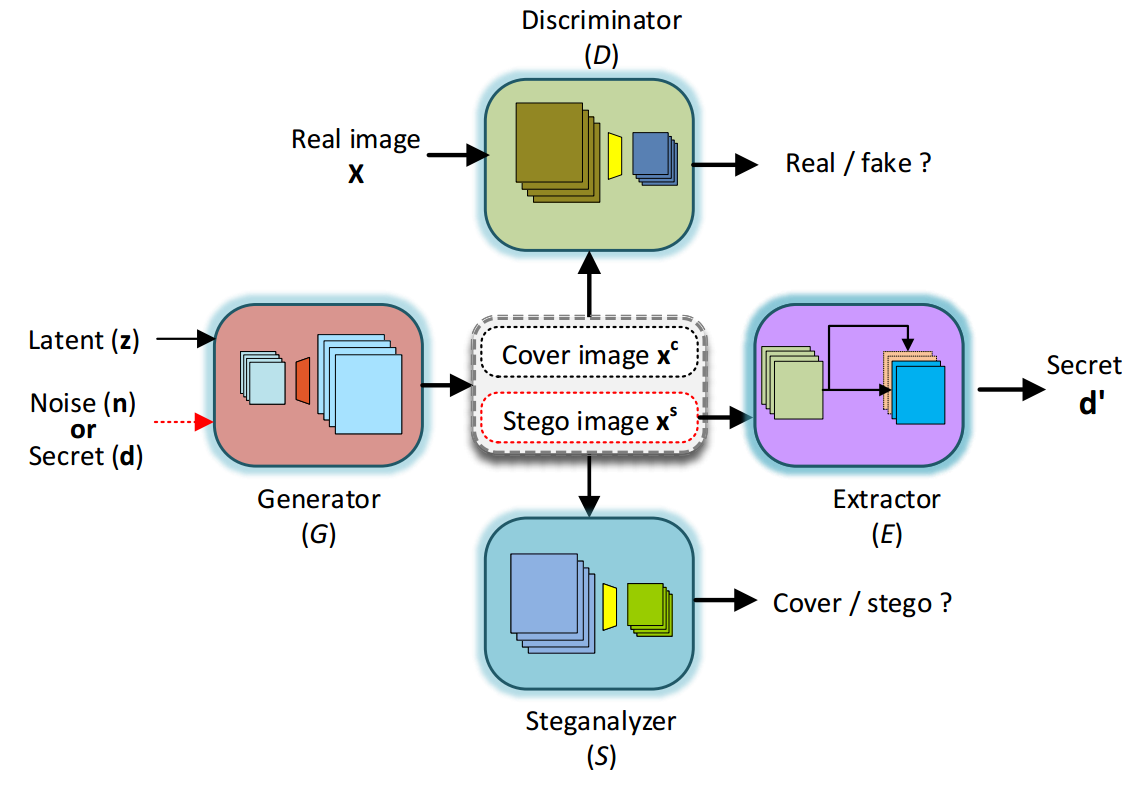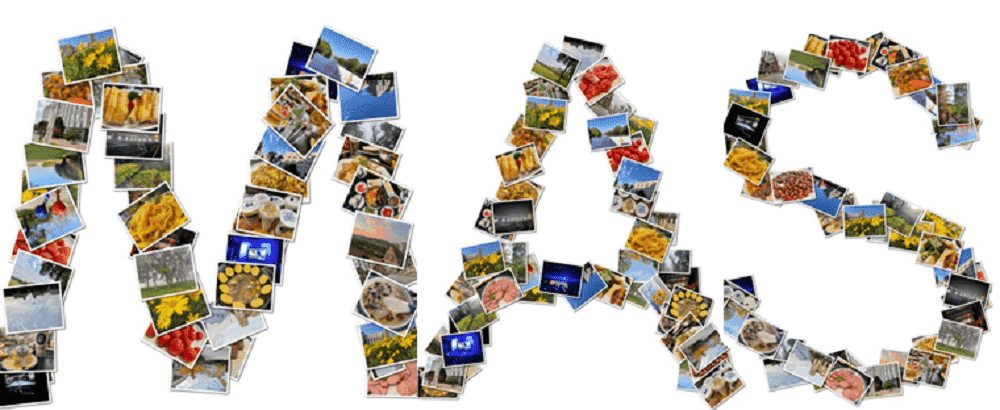
Schematic diagram of generative steganography
Abstract
Steganography usually modifies cover media to embed secret data. A new steganographic approach called generative steganography (GS) has emerged recently, in which stego images (images containing secret data) are generated from secret data directly without cover media. However, existing GS schemes are often criticized for their poor performances. In this paper, we propose an advanced generative steganography network (GSN) that can generate realistic stego images without using cover images. We firstly introduce the mutual information mechanism in GS, which helps to achieve high secret extraction accuracy. Our model contains four sub-networks, i.e., an image generator (𝐺), a discriminator (𝐷), a steganalyzer (𝑆), and a data extractor (𝐸). 𝐷 and 𝑆 act as two adversarial discriminators to ensure the visual quality and security of generated stego images. 𝐸 is to extract the hidden secret from generated stego images. The generator 𝐺 is flexibly constructed to synthesize either cover or stego images with different inputs. It facilitates covert communication by concealing the function of generating stego images in a normal generator. A module named secret block is designed to hide secret data in the feature maps during image generation, with which high hiding capacity and image fidelity are achieved. In addition, a novel hierarchical gradient decay (HGD) skill is developed to resist steganalysis detection. Experiments demonstrate the superiority of our work over existing methods.
Method

The overall framework of our proposed GSN
The architecture of the proposed GSN consists of a generator (𝐺), a discriminator (𝐷), a steganalyzer (𝑆) and an extractor (𝐸). 𝐷 and 𝑆 are used as two discriminators in GANs, which can ensure the visual quality and reduce the difference between generated cover/stego images, respectively. The inputs of GSN include a latent vector
To facilitate covert communication, we propose a flexible image generator that can produce either cover or stego images:

The architecture of proposed generator
We design a module called secret block to enable the generator to synthesize cover and stego images. The function of the secret block lies on two aspects: 1) it enables the generator to synthesize cover or stego images when noise or secret data is input; 2) it removes the defects on image contents and improves the quality of stego images. The input secret data can be written as
BibTeX
@inproceedings{wei2022generative,
title={Generative steganography network},
author={Wei, Ping and Li, Sheng and Zhang, Xinpeng and Luo, Ge and Qian, Zhenxing and Zhou, Qing},
booktitle={Proceedings of the 30th ACM International Conference on Multimedia},
pages={1621--1629},
year={2022}
}
